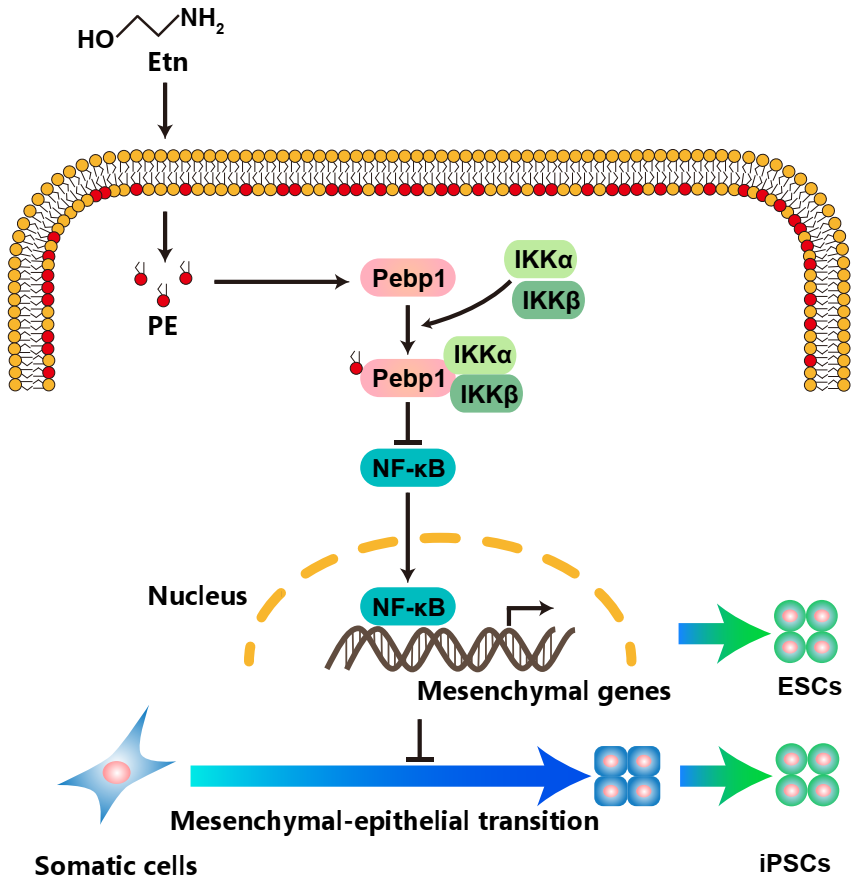Scientists Reveal Roles of Phospholipids in Stem Cell Pluripotency
Phospholipids, the most abundant lipids in most mammalian cells, serve as the wall inside a cell, separating one cell into relatively independent rooms. A recent study suggest that phospholipids may also function as “beacon tower” to transmit signals inside cells, like the “Great Wall”.
The study, led by Dr. LIU Xingguo from the Guangzhou Institutes of Biomedicine and Health, shows that phospholipids deliver signals to cell nucleus, and regulate cellular morphology through gene expression.
LIU and his colleagues examined the lipid profiles during somatic cell reprogramming in their study. Results reveal dynamic changes of phospholipids during reprogramming, implying the key roles of phospholipid remodeling in reprogramming.
The study revealed a previously unrecognized connection between phospholipids, cell migration, and pluripotency and highlights the importance of phospholipids in cell fate transitions.
“We showed that the cytidine diphosphate ethanolamine (CDP-Etn) pathway inhibits nuclear factor κB (NF-κB) signaling and mesenchymal gene expression, leading to accelerated mesenchymal-to-epithelial transition (MET) and enhanced reprogramming, thus revealing a possible mechanistic link of phospholipid metabolism to cell migration and cell fate,” said LIU.
This finding entitled “Phospholipid remodeling is critical for stem cell pluripotency by facilitating mesenchymal-to-epithelial transition” was published on November 27, 2019, in the Science Advances (https://advances.sciencemag.org/content/5/11/eaax7525), a journal of the American Association for the Advancement of Science.
MET plays a necessary regulating part during development and differentiation of cells, as well as in tumor metastasis. The study, therefore, may “shed light on exploration of the regulation of cell fate and the physiological regulation of cancer,” according to LIU.
This work was supported by the National Key Research and Development Program of China, the Chinese Academy of Sciences, the National Natural Science Foundation of China, the Guangdong Province Science and Technology Program, and the Guangzhou Science and Technology Program.

Proposed model for the CDP-Etn pathway in pluripotency acquisition. (Image by WU Yi)
Contact:
Prof. LIU Xingguo, Ph.D Principal Investigator
Guangzhou Institutes of Biomedicine and Health, Chinese Academy of Sciences (http://www.gibh.cas.cn/)
Guangzhou, Guangdong 510530, China
Tel: 020-32015225
E-mail: liu_xingguo@gibh.ac.cn
Keywords:
phospholipids; reprogramming; mesenchymal-to-epithelial transition; NF-κB
Attachment Download:
-
Contact
-
Reference
-
Related Article